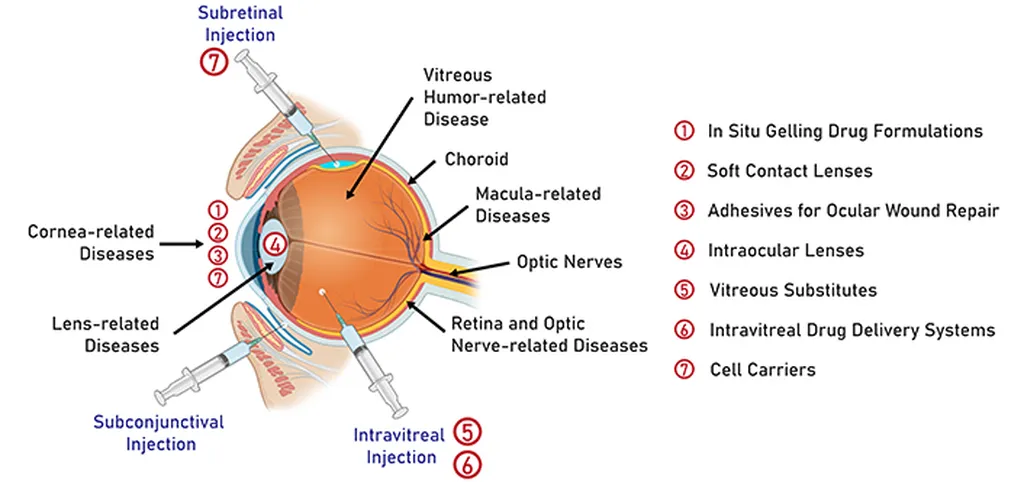In the realm of ocular drug delivery, a groundbreaking review published in the journal *Exploration of BioMat-X* (translated as *Exploration of Biomaterials*) is shedding light on the transformative potential of hydrogel technology. Led by Doanh Truong from the College of Arts & Science at Case Western Reserve University, the research delves into how hydrogels could revolutionize the treatment of various ocular diseases, offering a beacon of hope for millions of patients worldwide.
Traditional ocular drug delivery systems have long grappled with challenges such as low bioavailability, the need for frequent administration, and invasive procedures. Hydrogels, with their remarkable biocompatibility and responsiveness to external stimuli, present a promising alternative. “Hydrogels can provide sustained and targeted drug delivery, addressing many of the limitations of conventional therapies,” Truong explains. This innovation could significantly enhance patient compliance and treatment efficacy, potentially reshaping the landscape of ocular disease management.
The review highlights the unique properties of hydrogels, including their swelling behavior, porosity, and mechanical strength, which make them ideal for various ocular applications. Hydrogels can be classified based on their cross-linking methods, origins, and stimuli responsiveness, each offering distinct advantages. For instance, thermosensitive and pH-responsive hydrogels have shown promising results in preclinical studies, particularly in treating conditions like dry eye disease (DED), glaucoma, corneal alkali burns, and neovascularization.
Despite these advancements, most hydrogel-based drug delivery systems are still in the preclinical stages. “Rigorous human trials are essential to validate the safety and efficacy of these systems,” Truong emphasizes. Collaborative efforts among researchers, pharmacologists, and ophthalmologists are crucial to translating these innovations into clinical practice.
The implications of this research extend beyond the medical field, potentially impacting the commercial sector as well. The development of advanced hydrogel technologies could spur investment and innovation in the pharmaceutical and biotechnology industries. As these technologies mature, they could lead to new commercial opportunities, driving growth and creating jobs in the healthcare sector.
In the broader context, the integration of hydrogel technology into ocular drug delivery systems could set a precedent for other medical fields. The principles underlying hydrogel-based drug delivery could be adapted to treat a wide range of conditions, from diabetes to cardiovascular diseases. This interdisciplinary approach could foster a new era of personalized medicine, tailored to the unique needs of each patient.
As the research continues to evolve, the collaboration between academia and industry will be pivotal. “The journey from the lab to the clinic is a complex one, but with the right partnerships, we can accelerate the translation of these technologies into real-world applications,” Truong notes. The review published in *Exploration of BioMat-X* serves as a testament to the potential of hydrogel technology, offering a glimpse into a future where ocular diseases are managed more effectively and efficiently.
In conclusion, the advancements in hydrogel technology for ocular drug delivery represent a significant step forward in the fight against ocular diseases. As researchers and industry professionals continue to collaborate, the promise of hydrogel-based drug delivery systems could soon become a reality, transforming the lives of patients and reshaping the future of ocular healthcare.

